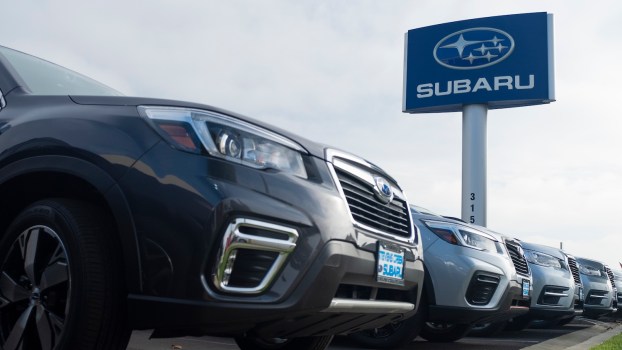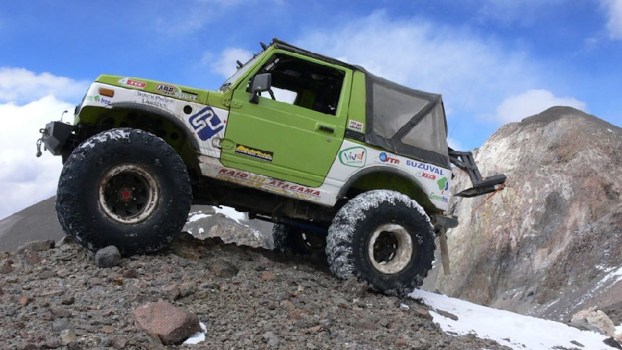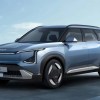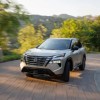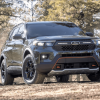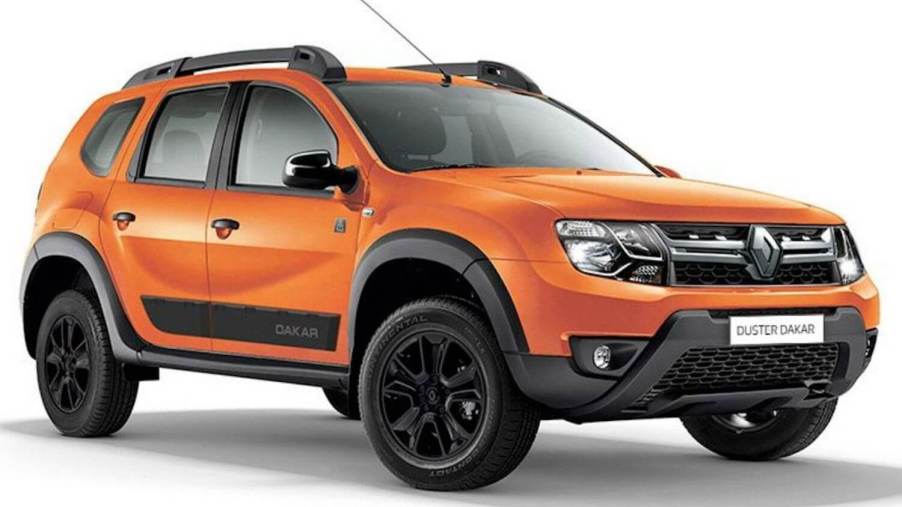
Meet the Duster Dakar: An Off-Roader Built by a French Company, Named After a City in Africa, and Sold in South America
I’ll never forget the first time I flew to South America: I exited the airport to grab a taxi and found myself sitting in the backseat of a Duster. As a fan of Mopar A-Bodies, I am very familiar with the Plymouth Duster–my brother has had one since high school. But my Colombian taxi was no Plymouth: it was a “Renault Duster Dakar.” It was a special edition crossover SUV, based on the Nissan Cube‘s chassis, with a rally-tested off-road system. Here’s the true story of how this fascinating Franken-car came to be.
What is the Renault Duster?
The Duster is a crossover Renault has been building since 2010. In some parts of the world, it’s also badged as a Dacia Duster or even a Nissan Terrano. In cerrain countries, it is even the best-selling crossover SUV.
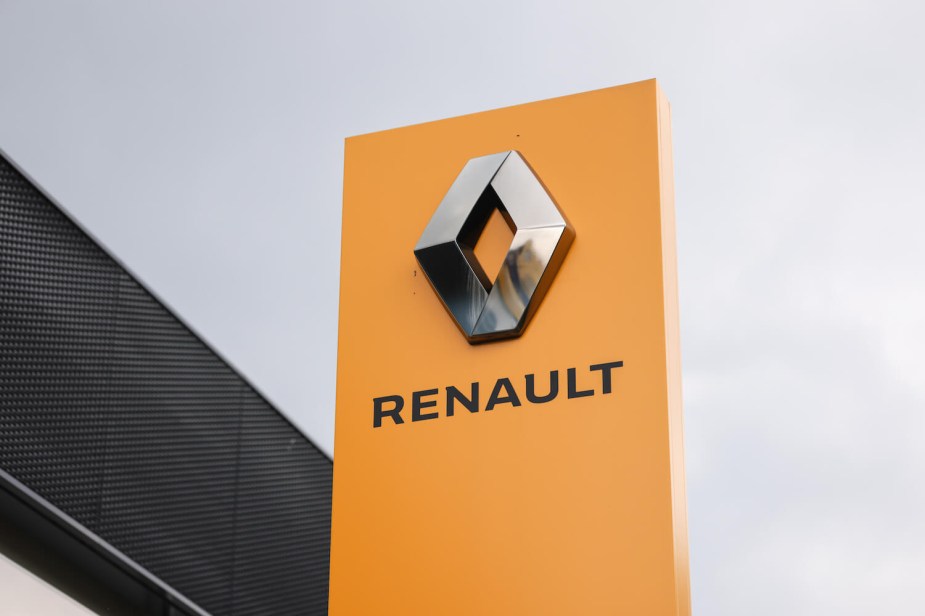
First of all, I need to clear up any confusion. The Renault/Dacia Duster has no relation to the old Plymouth Duster–a sport compact muscle car built by the Chrysler Corporation from 1970 through 1976.
Second of all, the France-based company Renault does own the Romania-based Dacia. Renault does not own Nissan, but Renault, Nissan, and Mitsubishi have a long-standing agreement to share technology and choose markets that do not compete. They also sell rebadged versions of one another’s products.
With that out of the way: here’s the rundown of the current Duster. The Renault-Nissan “B Platform” underpins many crossover vehicles. This includes the 1998-2019 Nissan Cube and the 2010-present Renault/Dacia Duster.
The Duster is a front-engine, FWD Crossover, and compact pickup truck. Premium configurations include a selectable AWD option, which splits power 50/50 front and rear. This crossover’s factory engine options vary by country but max out with the 2.0-liter I4. But that didn’t stop Renault from building some seriously hot-rodded versions for various motorsports events.
The Renault/Dacia Duster is a motorsports contender
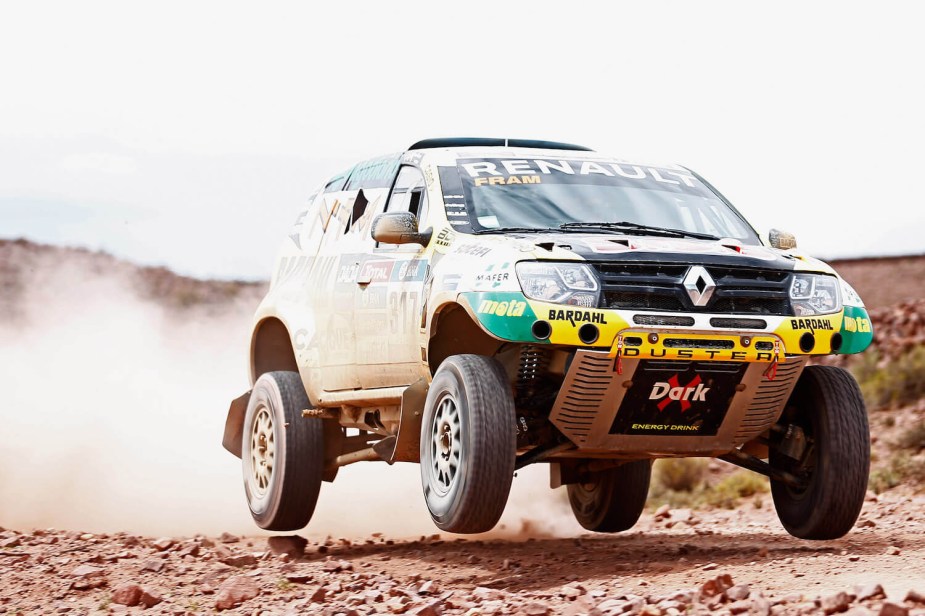
There have been several factory-built racecar versions of the Duster. Dacia managed to shoe-horn an 850-horsepower Nissan GT-R engine into its Duster “No Limit” for the Pikes Peak Hill Climb. Renault built a series of heavily modified Dusters with lifted suspension and V8 engines for the Dakar off-road race.
The Paris-Dakar off-road rally traditionally runs from the coastal city of Dakar, Senegal, across the Sahara, and to Paris, France. Because of political upheaval in some African countries, rally organizers chose to hold the event in South America from 2009-2019. From 2020-present, it takes place in Saudi Arabia.
While the Dakar Rally was taking place in Argentina, Chile, Bolivia, and Peru, Renault knew the event would be a perfect way to demonstrate the capabilities of its South-American-market vehicles. It built up two V6-powered Duster “Dakars” for the 2013 event. Only one of the vehicles finished, earning 29th place. The next year, the Renault team moved up to 14th place.
For the 2015 event, Renault built two all-new Duster “Dakar” race cars with a V8 engine borrowed from Nissan. It ran these cars again in 2016. For the 2018 model year, Renault Colombia decided to capitalize on Renault’s Dakar rally cars with a special edition of the Duster.
The Dakar is the off-road edition of the Duster crossover
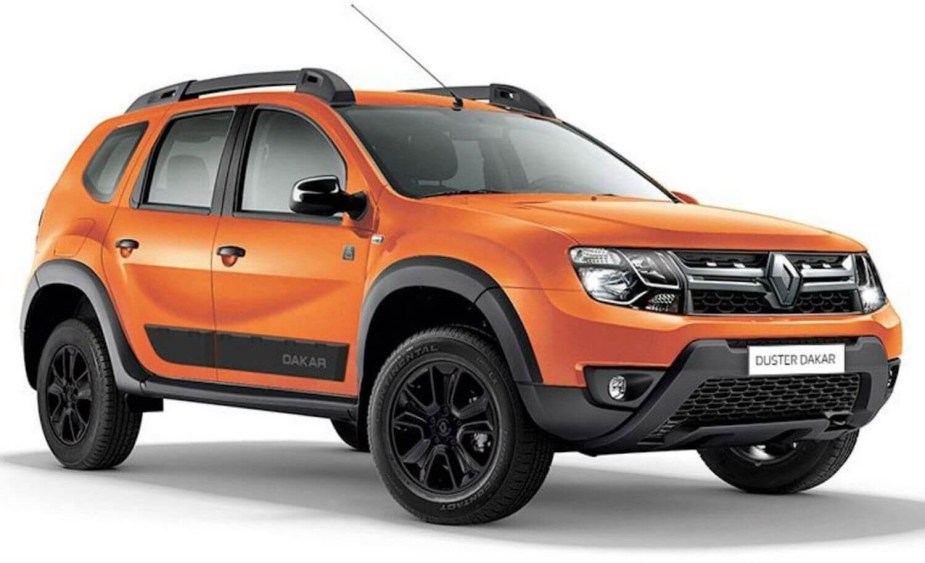
Renault introduced the Duster in Colombia in 2012. Today, it is the best-selling crossover SUV in Colombia. Renault actually builds Dusters for Colombia, Ecuador, and Mexico in the Sofasa, Colombia plant. It has even spun off the Duster Oroch compact pickup truck which is another popular vehicle in the Colombian market.
For 2018, Renault Colombia launched a “Dakar” special edition of the Duster, built for off-roading. The Renault Duster Dakar has a factory lift kit, larger (16-inch) rims, skidplates, high-clearance bumpers, and special black trim with “Dakar” badges and logos–according to Colombia’s Motor.Com.Co.
The part-time 4WD option comes standard on the Duster Dakar. The driver can choose between full-time AWD, FWD, or “Automatic,” which kicks in when the back wheels start to spin. Duster Dakar buyers could choose between a 1.6-liter or 2.0-liter gasoline I4 engine. Both came with a manual transmission.
The Duster Dakar is a cool crossover but might have been too late to the market to be a real success. In 2019, the Dakar Rally organizers moved the event from South America to Saudi Arabia. Renault introduced the second-generation Duster to the Colombian market during the 2021 model year and decided not to continue with a Dakar trim.
I told my taxi driver how much I liked his Duster Dakar. I showed him a picture of my brother’s 1970 Plymouth Duster, and he laughed. He asked why the USA gets the best cars. But he added that his Duster was probably better off-road than the RWD muscle car. I agreed but decided not to tell him about Plymouth’s version of the 4WD Ramcharger SUV: the 1974-1981 Trail Duster.
Next, read about the Renault Alaskan pickup truck: engineered in Japan, built in Argentina, and sold in Colombia, or see how the 4WD Dacia Duster performs off-road in the video below:

